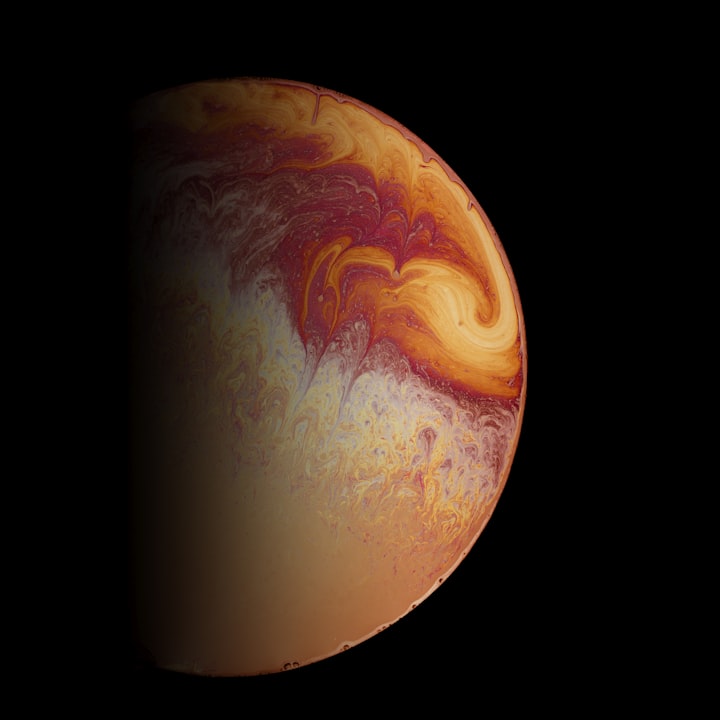Exploring the Possibility of Sending Humans to Venus by 2050
A Technological Odyssey

The prospect of sending humans to Venus, the second planet from the Sun, has long captivated the human imagination. While the focus has historically been on Mars as a potential destination for human exploration, advancements in technology and a better understanding of Venus have recently sparked renewed interest in exploring the inhospitable world. In this article, we will delve into the challenges and possibilities of sending humans to Venus by 2050.
Understanding Venus
Venus is often referred to as Earth's "evil twin" due to its similar size, composition, and mass. However, the similarities end there. Venus has a thick, toxic atmosphere composed mainly of carbon dioxide with sulfuric acid clouds, which create a greenhouse effect trapping immense amounts of heat. Surface temperatures can soar up to a blistering 470 degrees Celsius (880 degrees Fahrenheit), hotter than the surface of Mercury, the closest planet to the Sun.
The surface of Venus is rugged and largely consists of volcanic plains, mountain ranges, and massive highland regions. Furthermore, its atmospheric pressure is about 92 times greater than that of Earth, creating an environment hostile to human life. All these factors present immense challenges for any potential human mission.
Technological Challenges
- Atmospheric Entry and Landing: The most critical phase of a mission to Venus would be entering its thick atmosphere and safely landing on the surface. The spacecraft must endure extreme temperatures and pressures during descent, making heat shielding and landing technologies vital to the mission's success.
- Surface Exploration: Venus' harsh surface conditions demand robust and durable exploration technology. The high temperatures and corrosive atmosphere necessitate specially designed rovers or landers capable of enduring such an environment while conducting scientific investigations.
- Life Support Systems: The ability to maintain a sustainable environment for human astronauts during their stay on Venus is crucial. Advanced life support systems capable of handling the planet's extreme heat, pressure, and lack of breathable air would be necessary.
- Radiation Protection: Venus lacks a strong magnetic field, exposing its surface to intense solar and cosmic radiation. Shielding astronauts from these harmful rays is a paramount concern for any mission to Venus.
- Return Journey: Returning astronauts safely to Earth is another considerable challenge. The spacecraft must be equipped to endure the harsh environment of space during the return journey.
Potential Solutions
- Advanced Heat Shielding: Developing advanced materials for heat shielding, possibly using ceramic composites or new ablative technologies, could protect spacecraft during atmospheric entry.
- Floating Habitats: To avoid the extreme temperatures on the surface, some propose the idea of floating habitats in Venus' atmosphere. These high-altitude balloons or airships could provide a platform for scientific research without the need for landing.
- Robotic Precursors: Before sending humans, extensive robotic missions can be conducted to gather data, test technologies, and assess the viability of human habitation.
- Nuclear Propulsion: Employing nuclear propulsion systems could shorten travel time to Venus and enhance the mission's efficiency.
- In-Situ Resource Utilization (ISRU): Utilizing local resources, such as extracting water from the atmosphere or minerals from the surface, could support human exploration and reduce reliance on Earth for supplies.
International Collaboration
Given the enormity of the challenge, international cooperation would be critical in making a Venus mission a reality. Collaborating on research, technology development, and sharing resources would expedite progress and ensure safety and success.
Conclusion
Sending humans to Venus by 2050 is undoubtedly an ambitious goal, fraught with numerous technical, environmental, and logistical challenges. However, with advancements in space technology and the spirit of exploration, it is not inconceivable. A successful mission to Venus could unravel the mysteries of our neighbouring planet and potentially pave the way for future interplanetary human exploration. The journey to Venus will require the collective efforts of the global scientific community and a steadfast commitment to pushing the boundaries of human exploration.
About the Creator
Tracey te Braake
I love writing and I want to bring joy to my readers as they lose themselves in my words.






Comments
There are no comments for this story
Be the first to respond and start the conversation.